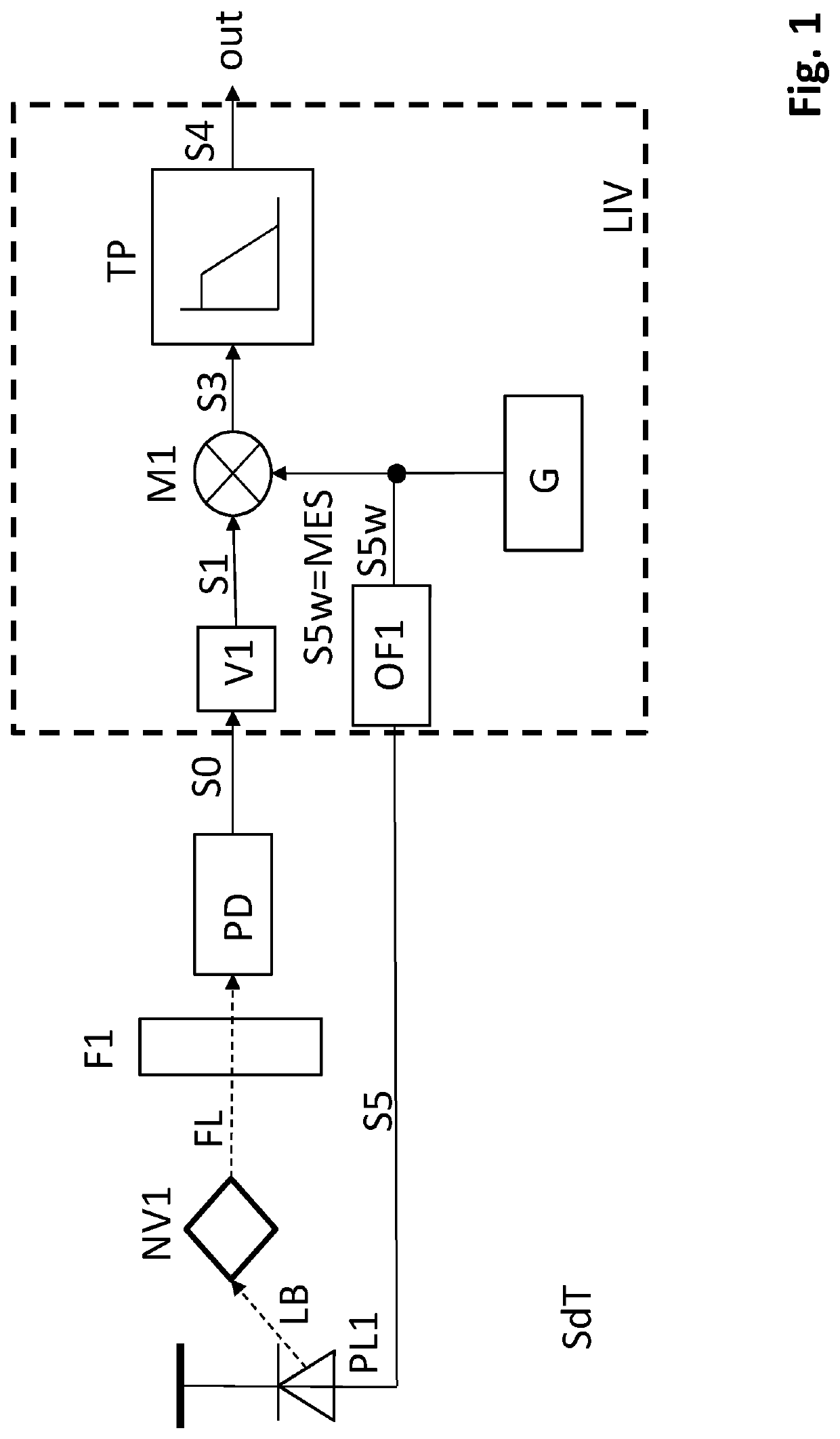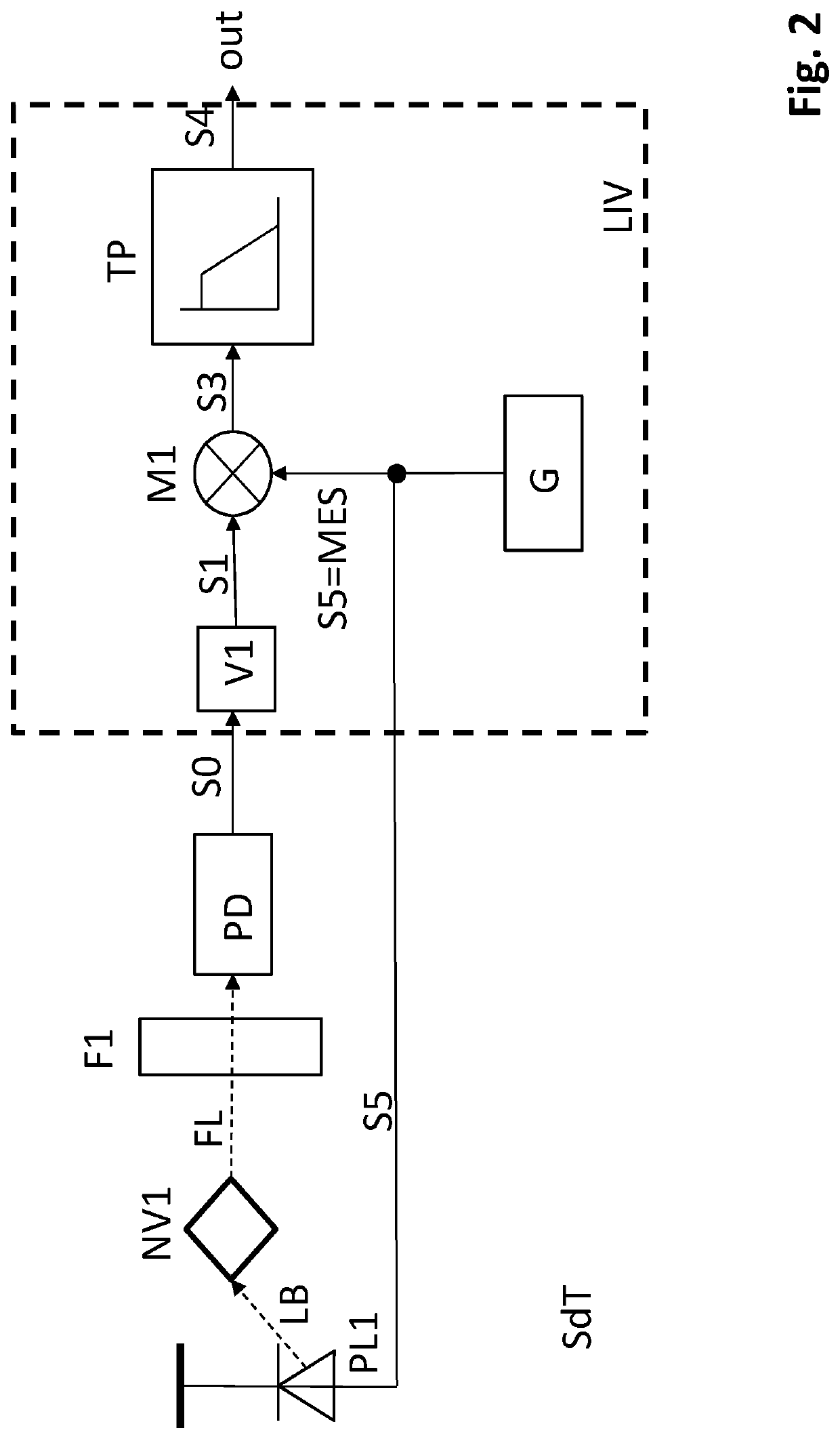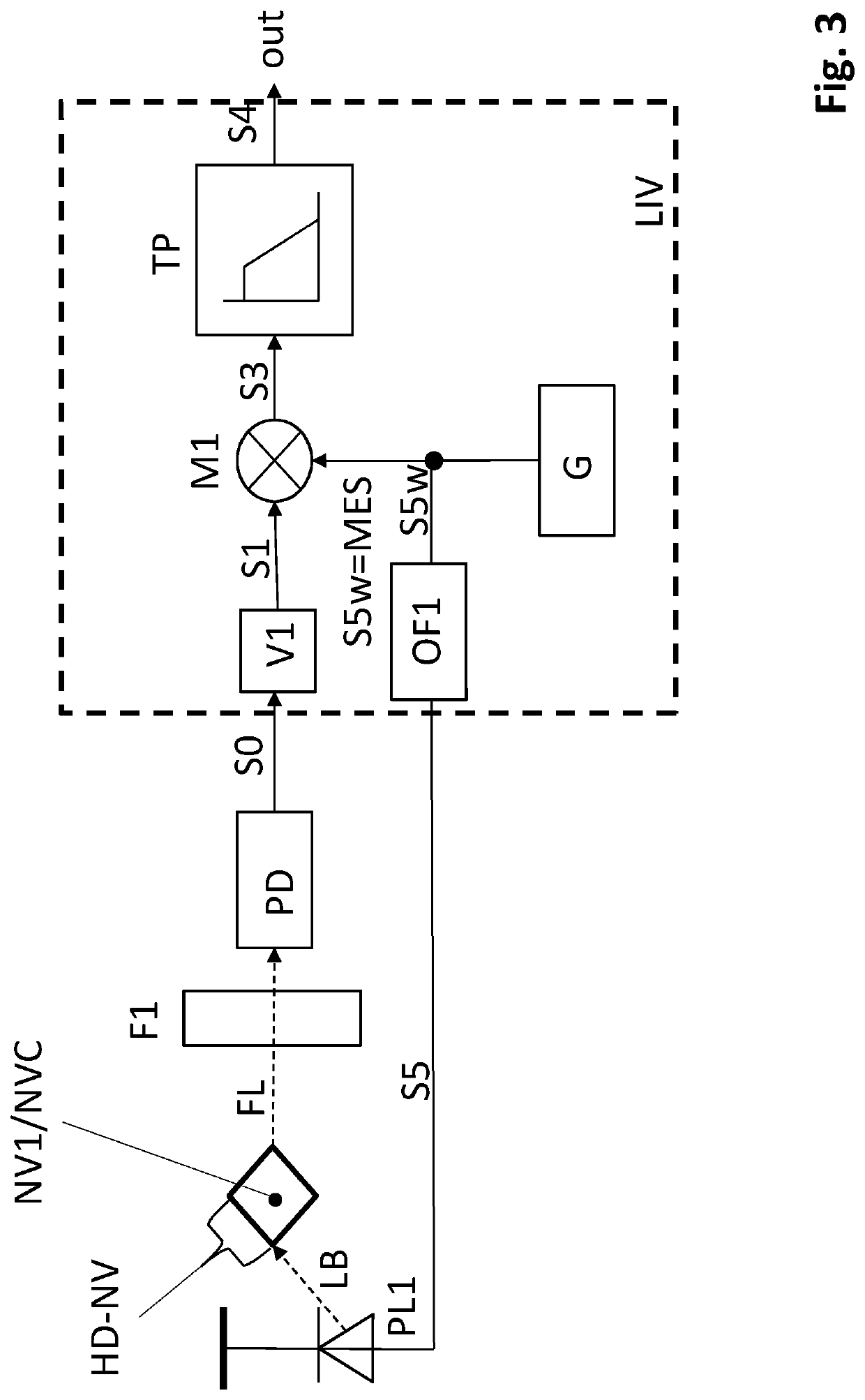Nv-center-based microwave-free quantum sensor and uses and characteristics thereof
a quantum sensor and microwave-free technology, applied in the field of microwave-free quantum sensors and uses and characteristics thereof, can solve the problems of diamond radiation damage, inability to remove, and diamonds treated in this way are typically slightly cloudy
- Summary
- Abstract
- Description
- Claims
- Application Information
AI Technical Summary
Benefits of technology
Problems solved by technology
Method used
Image
Examples
Embodiment Construction
[0477]The figures show selected examples in a schematic and simplified manner. They serve the purpose of clarification. The features of the description and the figures can be combined with each other as far as reasonable. The stress results from the respective valid set of claims.
FIG. 1
[0478]FIG. 1 shows a schematically simplified evaluation circuit according to the state of the art (SdT). A pump radiation source (PL1) irradiates the diamond sensor element with the NV center as paramagnetic center (NV1) with pump radiation (LB). This pump radiation (LB) causes the paramagnetic center (NV1) to emit fluorescence radiation (FL). The intensity (Ipmp) of the pump radiation (LB) from the pump radiation source (PL1) is modulated. This modulation of the intensity (Ipmp) of the pump radiation (LB) of the pump radiation source (PL1) depends on a transmission signal (S5). Preferably, the intensity (Ipmp) of the pump radiation (LB) of the pump radiation source (PL1) is substantially proportiona...
PUM
| Property | Measurement | Unit |
|---|---|---|
| energy | aaaaa | aaaaa |
| temperature | aaaaa | aaaaa |
| temperature | aaaaa | aaaaa |
Abstract
Description
Claims
Application Information
 Login to View More
Login to View More - R&D
- Intellectual Property
- Life Sciences
- Materials
- Tech Scout
- Unparalleled Data Quality
- Higher Quality Content
- 60% Fewer Hallucinations
Browse by: Latest US Patents, China's latest patents, Technical Efficacy Thesaurus, Application Domain, Technology Topic, Popular Technical Reports.
© 2025 PatSnap. All rights reserved.Legal|Privacy policy|Modern Slavery Act Transparency Statement|Sitemap|About US| Contact US: help@patsnap.com



